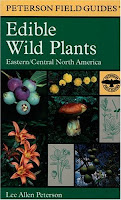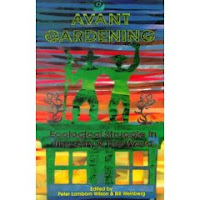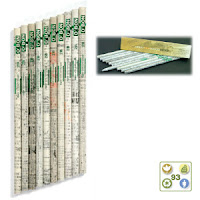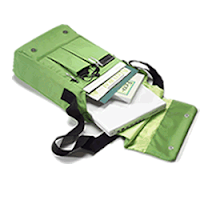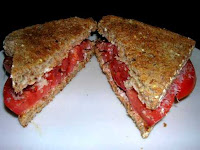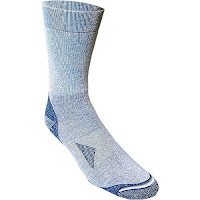To round out our weekend of enjoying the great outdoors of this fair borough, my boyfriend and I joined a class called "Feasting for Free in Brooklyn" through the Brooklyn Botanic Garden (but led mainly through Prospect Park).
Our teacher/guide was Leda Meredith, a forager before she had even heard the term. Having Greek roots -- in Greece, foraging is not some fringe activity -- going after wild edibles is in her blood.
When Leda asked us, before starting the tour, why we decided to attend the class, my brain froze. Maybe because I was the first person to share, but most likely because I had so many reasons.
- What a great tool to have in case our society collapses
- If I'm in the park and hungry, I can just start snacking on some foliage
- Dining on wild edibles is in line with a sustainable lifestyle
- How cool to be aware of the plants around you, and to be able to identify a poisonous nightshade from a delicious allspice berry?
- No need to make a trip to the supermarket, there's feasting to be had all around us
- What better way to spend a beautiful summer Sunday afternoon but outdoors searching for food
- The food is really free
Though I only managed to mutter something like, "I like food, I don't want to depend on the food system, bla-dee-bla."
So here are some of the things I learned on the walk. DISCLAIMER: Please consult a reputable field guide before harvesting and eating wild plants (there's a list of books below).
Some generalities about wild edibles (there aren't many):
- Any clover-shaped plant is edible (like wood sorrel, see image below)
- All pine trees are edible; in case of emergency you can chew pine needles for vitamin C
- Any plant that smells like onions or garlic is edible
- All fruit with a 5-point crown (like blueberries) are edible
- When identifying plants, always use more than one trait to identify! Sometimes two very different plants can have the same trait (like Elderberries and a look-alike plant, see below)
Specific plants that are edible (and tasty!):Wood Sorrel (
Oxalis)
Tender lemony leaf; pretty easy to identify by clover-shaped leaf and tiny yellow flowers.
 Elderberries
Elderberries (
Sambucus)
The images below highlight the importance of identifying plants by more than one trait. The berries shown in the third photo are
not elderberries. How can one tell? Look at the leaves and stem. An elderberry plant has oblong divided leaves and a bumpy, knobby stem. The second plant below has leaves of a different shape and with a toothed edge.
Elderberries are better when you cook 'em -- for pies, jams, and syrup.
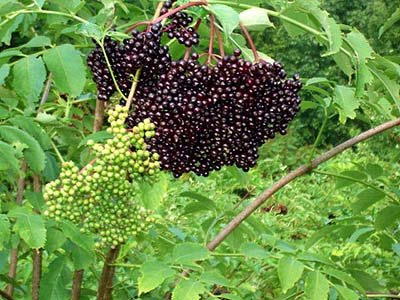
Elderberries (Image:
Honey Gardens)

NOT Elderberries!
UPDATE: According to Leda, the berries above are a type of Viburnum, and while edible, these are not particularly tasty (even the birds won't eat 'em!).
Peppergrass (
Lepidium)
The small green, tender seeds have a great peppery finish (after a bit of chewing). You can use them as you would pepper, just grind 'em first.
 Chufa
Chufa (
Cyperus esculentus)
One of the cool characteristics of this plant is its triangular stem. It's also pretty fun looking with it's flowery tufts of yellow/green. At the roots of chufa are tubers that can be eaten cooked or raw and are said to be similar to water chestnuts.
 Some plants that are useful for their medicinal purposes:Mugwort
Some plants that are useful for their medicinal purposes:Mugwort (
Artemisia vulgaris)
Mugwort can be used as a seasoning in foods and as a remedy to relieve tension or unblock flow (such as stress or delayed menstruation). One of the distinguishing features of the plant is the white/silver underside of the leaf. Though depending on the age of the plant, the leaves can vary from wider and divided (almost like a divided parsley) and narrow (almost like rosemary). The leaves also have a strong herbal scent.

Rose HipsThese babies are high in vitamin C -- you've probably seen them as an ingredient in vitamin supplements. The orange/red flower has a little tuft of stamen on top. The leaves look like those of a rose and the stem has a characteristic thorn. Rose hips can be brewed in a tea, but be sure to filter out the fuzzy bits.
 Plaintain
Plaintain (
Plantago)
Not to be confused with the banana, plantago major is also known as "white man's footprint" because Native Americans claimed that everywhere a white man went he would leave one of these plants behind. (The plant was thought to have been brought here by early settlers from Europe.) Plantain is a natural anti-microbial and is useful in relieving insect bites and other skin ailments. The seeds in the conical part of the flower are the main ingredient of bulk laxatives like Metamucil.
 Goldenrod
Goldenrod (
Solidago)
Often a mistaken cause of seasonal allergies, goldenrod does not even pollinate via the wind but through insects. The flowers and leaves can be made into a tea which can help alleviate sore throat.
 Check out more photos here.Interested in foraging?
Check out more photos here.Interested in foraging? Here are some resources (as recommended by Leda):
